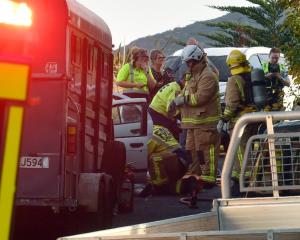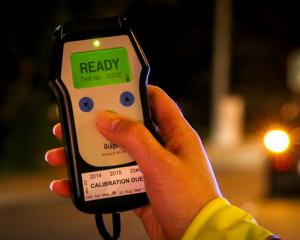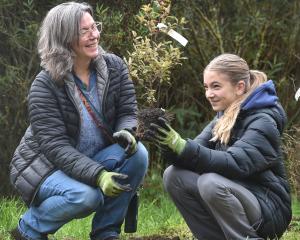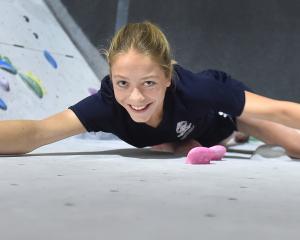Otago is a province with a rich history of establishing firsts. We have led the way in many fields, and that tradition continues. Researchers at the University of Otago are attracting international attention, with some granted millions of dollars for cutting-edge projects. So what are they up to? Reporter John Gibb, in a fortnightly series, does his own research on the researchers.
Ground-breaking research being led by University of Otago medical graduate Ayesha Verrall could help identify new ways to prevent one of the world's big killers - tuberculosis.
It is hoped the work will provide crucial insights into the immune system.
Dr Verrall (34), who was Otago University Students' Association president in 2001, is undertaking much of her research in Bandung, Indonesia's third-largest city and provincial capital of West Java.
Her studies aim to probe the genetic basis of natural immunity against Tb, a disease that kills about a million people throughout the world each year.
She is well aware that Tb takes ''a very heavy toll'' on the community in Bandung.
Her research is in collaboration with the University of Padjadjaran in that city.
The project, for an Otago PhD, is being undertaken through the Otago University Centre for International Health, co-directed by two professors, her supervisor, Philip Hill, and John Crump.
About 80% of Tb cases - and most related deaths - occur in low-income countries.
''By preventing tuberculosis, we can address a major cause of death and misery among the poorest people,'' Dr Verrall said.
''In such countries, stretched health services focus on treating the many cases of active disease, and latent infection is untreated.''
Two billion people were estimated to have latent infection, providing an ever-present reservoir of reactivating disease, she said.
''As a junior doctor, I felt I was the best doctor I could be when I was treating infectious diseases.
''I felt able to help patients navigate the fear, stigma and implications for their family that come from having serious infections like HIV or Tb.''
Although she was born in Invercargill and grew up in Te Anau, Dr Verrall also spent a couple of years of her childhood in the Maldives, in the Indian Ocean, where her mother is from.
Too young to understand tuberculosis then, she understood poverty meant her Maldivian friends and family had more illness, more orphans and more disability such as blindness.
Today, by visiting families with Tb cases, she hopes to identify people protected from the disease.
If they choose to join the study, she takes blood and uses the results to test various hypotheses about how that protection might occur.
''As a junior doctor looking after tuberculosis patients, I felt frustrated by rudimentary diagnostic tests and poor treatments,'' she said.
The Bacillus Calmette Guerin (BCG) vaccine was almost a century old and most tuberculosis drugs were invented in the 1940s and 1950s, she said.
''I think scientific progress in tuberculosis is slow because it is a disease of poverty.
''The flip side of this is that there is scope to make a difference as a young researcher and in this field my colleagues are other similarly motivated people.''
Dr Verrall enjoys her day to day work.
''The mix of science, project management, fried snacks and motor scooter riding is just right.''
Dr Verrall notes that people who recover from tuberculosis are not immune to reinfection.
''So the traditional strategy for developing a vaccine - where you induce the natural response to infection - might not work for tuberculosis.
''I think that is why the BCG vaccine that consists of weakened tuberculosis bacteria is only modestly effective.''
The dogma that the adaptive immune system could protect against tuberculosis was ''flawed''.
''We need a new strategy.
''We hope that by finding an example of naturally occurring protection, we can describe a protective response that could be an avenue to a new vaccine.''
She was aiming to recruit 2000 people for the Indonesian study, perhaps about a quarter of them ''what we call early clearers of tuberculosis'', she said.
Next year, Dr Verrall will travel to Radboud University's Laboratory of Experimental Medicine in the Netherlands, backed by a $15,000 Elman Poole Travelling Scholarship.
Her colleagues there had been ''leading the way'' in studies of the innate immune system, said.
She would start some detailed immunological studies and ''try and build our ideas about what the exact mechanism is''.
Prof Hill said earlier research had looked at the reasons for differences in the likelihood of Tb infection progressing.
''Very little has focused on the reasons for not actually getting infected in the first place,'' he said.
For those exposed to Tb but not infected, it was likely that their innate immune system - including the skin and other body linings - ''clears the bug without any necessary engagement of their adaptive immune system''.
While the innate system was previously not thought to be able to remember pathogens, there was growing evidence that it could, in fact, be trained to give immunity.
Dr Verrall said her involvement with OUSA had been the highlight of her university experience.
She was still proud of that work, including lobbying to achieve interest-free student loans.
''Being student president seemed like quite an unusual reason to take time out of medical school, but I now see all the experience I have with running projects, outreach, budgets, building teams and working in a bicultural context comes from that time.''
Dr Verrall, quoting her mother, said she wanted to be a scientist when she was 3 years old.
''But in general I think I was inspired to do whatever I was enjoying at the time, be that music, sport or writing.''
At the end of a busy day, Dr Verrall relaxes with her daughter.
''Playing with my toddler, Laila, is the perfect antidote for all the stresses a large study, tricky lab experiments, supplies stuck in customs and bureaucratic delays.''
SNAPSHOT
Name and age: Ayesha Verrall (35)
Occupation: Physician, PhD candidate
Qualifications: MBChB, Fellow of the Royal Australasian College of Physicians (FRACP)
Work history: Graduated from University of Otago in medicine, worked in New Zealand as a junior doctor and trained in infectious diseases. Completed fellowship at National University Hospital Singapore. Studying for a PhD through Otago University, based in Indonesia, and supported by a $250,000 Health Research Council Clinical Training Fellowship.
Proudest achievement: My daughter, Laila Verrall. Both she and my thesis are works in progress.
THE CHALLENGE
Understanding why some people exposed to tuberculosis are not infected, and applying this to developing new anti-Tb therapies.
What is your research about?
Describing protective immune responses to Tb in people heavily exposed yet uninfected.
Why is it important?
By understanding a natural protective response to Tb we could design better treatments or vaccines.
Most interesting aspect of your research?
Learning how to run a complex project in a different culture.
How is it unique?
People who recover from Tb are not immune to reinfection. So the traditional strategy for developing a vaccine, inducing the natural response to infection, might not work for Tb. By finding naturally occurring protection, we hope to describe a protective response that could lead to a new vaccine.












